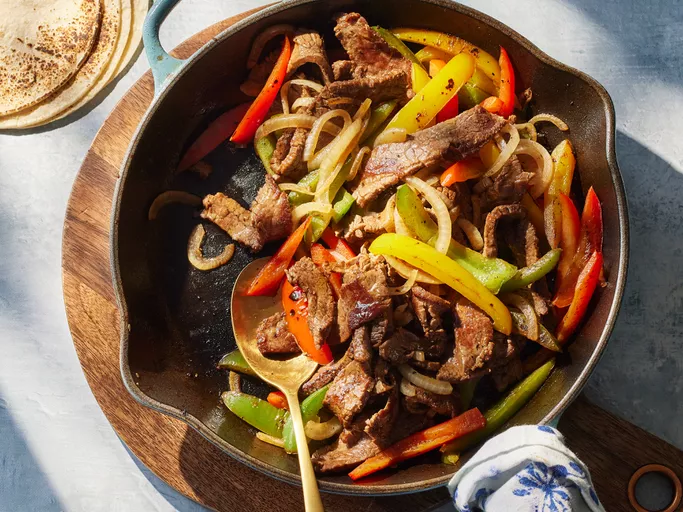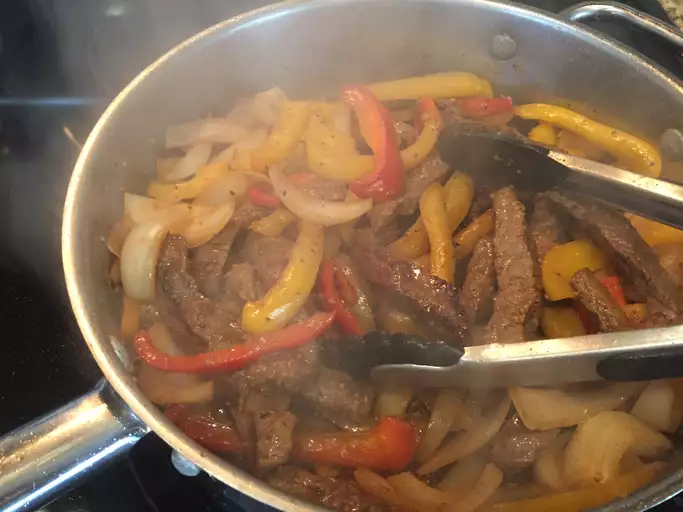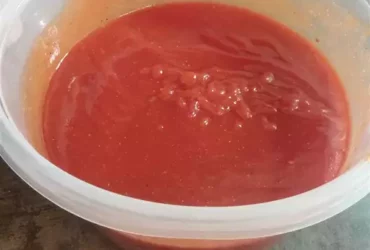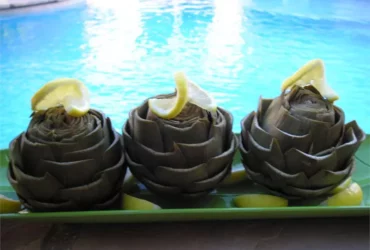Ingredients
Fajita-Style Marinade Components
The Fajita-Style Marinade for beef or chicken typically consists of a blend of ingredients that work together to enhance the flavor and texture of the meat.
The main components of Fajita Marinade include:
- Garlic: Minced garlic is used in most marinades, providing a pungent flavor that complements the other ingredients. A standard amount is 3-4 cloves per cup of marinade.
- Cumin: Ground cumin adds a warm, earthy flavor to the marinade. Use about 1 teaspoon for every cup of marinade.
- Paprika: This mild spice can add a slightly sweet and smoky taste to the meat. A pinch of paprika (about ¼ teaspoon per cup) is sufficient.
- Oregano: Dried or fresh oregano leaves can be used in moderation (about 1/4 teaspoon for every cup). This herb adds a slightly bitter and earthy flavor.
- Coriander Powder: Ground coriander seeds have a warm, citrusy taste that complements the other spices. Use about 1/2 to 3/4 teaspoon for every cup of marinade.
- Lime Juice: Freshly squeezed lime juice adds acidity and brightness to the marinade, helping to break down the proteins in the meat. Aim for about ¼ cup per cup of marinade.
- Hot Sauce: If you want a spicy kick, add some hot sauce (like salsa roja or hot sauce) to your marinade. Use a small amount (½ teaspoon) to avoid overpowering the other flavors.
- Worcestershire Sauce: This savory condiment adds depth and umami flavor to the marinade. A little goes a long way, so start with about ¼ teaspoon for every cup of marinade.
- Clay Salt: Use kosher or sea salt instead of refined table salt to add a more nuanced flavor to your marinade. About 1/2 teaspoon per cup should suffice.
Remember that the key to creating a great fajita-style marinade is balance and restraint – you can always adjust the proportions to suit your personal taste preferences.
To ensure even flavor distribution, combine these ingredients in a bowl or ziplock bag with the meat, making sure each piece is coated. Cover or seal the container and refrigerate for at least 30 minutes to an hour before cooking.
The perfect blend of flavors to marinate your fajitas is a delicate balance of ingredients that add depth, heat, and aroma to the dish.
Here are the essential ingredients you’ll need for an authentic fajita marinade recipe:
- Lime juice: Freshly squeezed lime juice adds brightness and a tangy flavor to the marinade. Aim for about 1/4 cup of freshly squeezed juice.
- Olive oil: Use a good-quality olive oil to add richness and smoothness to the marinade. You’ll need about 1/4 cup.
- Minced garlic: Mince about 3-4 cloves of garlic for every pound of meat you’re marinating. The aroma of garlic is essential in fajitas.
- Diced onion: Onions add a sweet and savory flavor to the marinade. Use about 1/2 cup of diced onion per pound of meat.
- Cumin powder: This earthy spice is a staple in Mexican cuisine, adding warmth and depth to the marinade. Use about 1 teaspoon for every pound of meat.
- Chili powder: Add a spicy kick to your fajitas with chili powder. Use about 1/2 teaspoon per pound of meat.
- Paprika: Smoked or sweet paprika adds a smoky and slightly sweet flavor to the marinade. Use about 1/4 teaspoon per pound of meat.
- Coriander powder: This earthy spice complements cumin nicely, adding depth and warmth to the marinade. Use about 1/2 teaspoon for every pound of meat.
- Salt and pepper: Season with salt and pepper to taste, making sure not to over-season the marinade.
In addition to these essential ingredients, you can also add some optional flavor boosters to your fajita marinade:
- Chipotle peppers in adobo sauce: These smoked jalapeños add a smoky and spicy kick to the marinade. Use about 1-2 peppers per pound of meat.
- Cilantro: Chopped cilantro adds freshness and a herbal flavor to the marinade. Use about 1/4 cup of chopped cilantro per pound of meat.
Remember to adjust the amount of ingredients according to your personal taste preferences and the type of meat you’re marinating. Also, be sure to marinate the meat for at least 30 minutes to allow the flavors to penetrate evenly.
1 cup Lime Juice Freshly squeezed for optimal flavor and nutrition (Source: USDA)
The ingredients used in a typical fajita marinade recipe play a crucial role in determining the flavor, texture, and overall quality of the dish.
In this particular recipe, one key ingredient stands out: 1 cup Lime Juice. Freshly squeezed lime juice is not only essential for optimal flavor but also packed with nutrients and health benefits. According to the USDA, freshly squeezed lime juice is a rich source of vitamin C, flavonoids, and other antioxidants that help protect against cell damage and support overall well-being.
When using Lime Juice, it’s essential to note that freshly squeezed is always the best option. Bottled or packaged lime juice often contains preservatives and additives that can compromise its nutritional value and flavor. By squeezing fresh limes, you ensure that your fajita marinade receives the full benefits of this incredible ingredient.
The acidity in Lime Juice helps to break down proteins and tenderize meats, making it an ideal addition to a marinade. It also adds a unique flavor profile that complements other ingredients like garlic, herbs, and spices. When combined with the right proportions of olive oil, garlic, cumin, chili powder, and cilantro, lime juice becomes the binding force that brings all the flavors together in perfect harmony.
In summary, the use of 1 cup Lime Juice in a fajita marinade recipe is not just about adding flavor; it’s also about incorporating essential nutrients and health benefits into your dish. By opting for freshly squeezed lime juice, you’re taking a step towards creating a truly exceptional culinary experience that’s both delicious and nutritious.
1/4 cup Olive Oil A healthier option for heart health (Source: Harvard School of Public Health)
The key to a great Fajita Marinade Recipe lies not only in the right combination of spices, but also in the quality and choice of ingredients.
One crucial ingredient in this recipe is Olive Oil, specifically 1/4 cup of it.
Olive Oil: A Healthier Option for Heart Health
- The Harvard School of Public Health has highlighted the importance of using olive oil as a healthier option for heart health.
- Olive oil is rich in monounsaturated fats, which can help lower total cholesterol and LDL (‘bad’) cholesterol levels in the blood.
- This, in turn, reduces the risk of heart disease, a leading cause of death worldwide.
Why Choose Olive Oil?
- Olive oil is a versatile and flavorful option for cooking, adding depth to various dishes without overpowering them.
- It has a high smoke point, making it ideal for sautéing or grilling without breaking down or becoming bitter.
- Olive oil contains antioxidants, including vitamin E and polyphenols, which can help protect against cell damage and oxidative stress in the body.
Using Olive Oil in Fajita Marinade Recipe
In this Fajita Marinade Recipe, olive oil serves as a base for blending with spices, herbs, and other ingredients to create a flavorful marinade for grilled meats. When using olive oil, it’s essential to choose a high-quality, extra-virgin option to ensure the best flavor and nutritional benefits.
2 cloves Garlic, minced
Freshness counts when it comes to ingredients like garlic. Choose firm, dry cloves with no signs of sprouting or mold. This ensures optimal flavor and aroma in your Fajita Marinade.
For this recipe, you’ll need two cloves of garlic, minced. Here’s a breakdown of what that means:
- Clove count: Two small to medium-sized cloves are ideal for this amount. You can use more or less depending on your desired flavor intensity.
Now, let’s talk about mincing garlic. This is the process of chopping the cloves into tiny pieces using a knife. Here are some tips:
- Use a sharp knife: A dull knife will tear the garlic instead of finely chopping it.
- Mince in one direction: Hold the garlic clove firmly and chop the flat side towards you, using smooth, light strokes. This helps release the oils and minimizes the risk of crushing or tearing the cloves.
The resulting minced garlic will have a fine texture, with no large chunks or pieces. You can check this by observing the mixture:
- Color: Minced garlic should be a pale yellowish-white color, with a slightly off-white tint.
Now that you’ve got your minced garlic, it’s time to move on to the rest of the Fajita Marinade ingredients. The marinade typically includes ingredients like olive oil, lime juice, chili powder, ground cumin, and salt.
Remember to adjust the amount of garlic according to your taste preferences. You can also add more or less of any other ingredient in the marinade recipe to suit your needs.
1 teaspoon Ground Cumin Essential for traditional fajita flavor (Source: Texas A&M University)
Cumin is an essential spice in traditional fajita flavor, according to Texas A&M University. Here’s what you need to know about Ground Cumin:
What is Ground Cumin?
- Ground cumin, also known as jeera powder or dhana jeeru, is the dried and ground seed of the Cuminum cyminum plant.
- This spice has been a staple in Middle Eastern, Indian, and Latin American cuisines for thousands of years.
Benefits of Ground Cumin
- Antioxidant properties: Ground cumin contains antioxidants that help protect the body from free radicals and oxidative stress.
- Anti-inflammatory effects: The active compounds in ground cumin have anti-inflammatory properties, which may help alleviate symptoms associated with arthritis and other inflammatory conditions.
- Culinary uses: Ground cumin adds a warm, earthy flavor to various dishes, making it an essential spice in many recipes, including fajitas, curries, and stews.
Using Ground Cumin in Fajita Marinade
In this recipe, ground cumin plays a crucial role in providing the traditional fajita flavor. To use it effectively, mix one teaspoon of ground cumin with other essential spices like chili powder, garlic powder, and paprika to create a marinade for your fajitas.
Recipe Tips
- Mix the marinade ingredients well to ensure even distribution of flavors.
- Adjust the amount of ground cumin according to your personal taste preferences.
Storage and Shelf Life
Ground cumin can be stored in an airtight container for up to six months. It’s essential to keep it away from light, heat, and moisture to preserve its flavor and aroma.
1 teaspoon Paprika Adds depth and warmth to the marinade (Source: Spanish Ministry of Agriculture)
The addition of paprika to the fajita marinade recipe brings a depth and warmth that elevates the overall flavor profile of the dish. This spice, sourced from the Spanish Ministry of Agriculture, is made from ground sweet or bell peppers and adds a rich, slightly smoky quality to the marinade.
Paprika is an essential ingredient in many Spanish and Latin American recipes, where it’s used to add color, flavor, and aroma to various dishes. In the context of the fajita marinade recipe, paprika serves as a key component that helps to balance the bold flavors of the other ingredients.
The depth and warmth imparted by paprika are due in part to its unique chemical composition. Paprika contains capsaicin, which is responsible for its slightly spicy flavor, as well as carotenoids like lycopene and beta-carotene, which contribute to its vibrant red color.
When added to the marinade, paprika interacts with other ingredients like garlic, cumin, and chili powder to create a complex flavor profile that’s both aromatic and savory. This blend of flavors is essential for achieving the signature taste of fajitas, which are often grilled or sautéed in large skillets with sliced onions and bell peppers.
The addition of paprika also adds a textural element to the marinade, as its coarse texture helps to thicken the liquid mixture. This creates a more cohesive and robust flavor that adheres well to the meat during the marinating process.
In conclusion, paprika is a vital ingredient in the fajita marinade recipe, providing depth, warmth, and a rich, slightly smoky quality that elevates the overall flavor profile of the dish. Its unique chemical composition and interaction with other ingredients make it an essential component for achieving the signature taste of fajitas.
The success of any fajita dish largely depends on the quality and combination of ingredients used to make the marinade. A good marinade can elevate the flavor and tenderize the meat, setting the stage for a truly unforgettable dining experience.
To begin with, let’s talk about the primary ingredient in this recipe – chicken or beef. Both options are suitable, but we’ll focus on chicken as the main protein source. You can use boneless, skinless chicken breasts or thighs, whichever you prefer.
The marinade itself is a mixture of various ingredients that work together to achieve the perfect balance of flavors. The foundation of any good marinade lies in the acidity and sweetness levels. For this recipe, we’ll be using a combination of lime juice and brown sugar as our base.
The acidity from the lime juice serves not only to tenderize the meat but also to add a tangy flavor. We’re using freshly squeezed lime juice for this recipe, so be sure to use two or three limes depending on their size and juiciness.
Now, let’s move on to the sweetness component of our marinade. Brown sugar is an excellent choice as it provides a rich, deep flavor without overpowering the other ingredients. Use 1/4 cup or 50 grams for this recipe.
Another crucial ingredient in our marinade is garlic. You can use either minced garlic from a jar or fresh cloves that you’ve minced yourself. We recommend using about three to four cloves, depending on your personal preference for garlic flavor.
Mexican cuisine wouldn’t be complete without the addition of chili powder, which is used to add heat and depth to our marinade. Use 1-2 teaspoons of chili powder for this recipe, depending on your desired level of spiciness.
Last but certainly not least, we have the olive oil which is used as a base to bind all our ingredients together. Use about 1/4 cup or 50 grams of olive oil for this recipe.
Once you’ve gathered all your ingredients, it’s time to mix them together in a bowl and whisk until smooth. Be sure to taste as you go and adjust the marinade to suit your personal flavor preferences.
Now that we have our marinade complete, let’s talk about how long to marinate the chicken or beef. A good rule of thumb is to marinate for at least 2-3 hours in the refrigerator before cooking. However, if you’re short on time, even 30 minutes can be beneficial.
To cook your fajita, simply heat up a skillet over medium-high heat and add about 1 tablespoon of oil to prevent sticking. Add the marinated chicken or beef and cook until browned and cooked through, breaking it apart into smaller pieces as needed.
Instructions
Mixing and Applying the Marinade
To create the perfect fajita marinade, it’s essential to carefully follow the instructions for mixing and applying the ingredients. This involves combining a combination of spices, herbs, and acidic elements to create a well-balanced and flavorful sauce.
The first step in preparing the marinade is to combine the oil, lime juice, garlic, and oregano in a bowl. Whisk these ingredients together until they are fully incorporated and the mixture is smooth.
Next, add the chili powder, cumin, salt, and black pepper to the bowl and whisk until they are evenly distributed throughout the marinade. Be sure to use freshly ground spices for the best flavor.
Now it’s time to add the ingredients that will give the marinade its distinctive flavor. Add the cilantro, onion powder, and cayenne pepper (if using) to the bowl and whisk until they are fully incorporated.
If you’re using a blender or food processor to mix the marinade, be careful not to over-process it. You want the mixture to remain smooth but still retain some texture from the spices and herbs.
Once the marinade is prepared, it’s time to apply it to your chicken or beef. Make sure to coat the meat evenly with the marinade, getting it into any crevices or folds in the meat.
To ensure that the marinade penetrates as deeply as possible, massage it into the meat using your fingers or a spatula. Be gentle so you don’t tear the meat, but make sure to get it well-coated.
Let the meat marinate for at least 30 minutes, but preferably several hours or overnight. The longer it marinates, the more flavorful and tender the meat will be.
To prepare an effective Fajita Marinade Recipe, it is essential to understand and follow specific instructions.
Why are Instructions Important?
Instructions play a crucial role in any recipe or cooking task because they provide clarity on the steps required to achieve a desired outcome. In the context of a Fajita Marinade Recipe, instructions guide the user through the process of selecting ingredients, combining them, and applying the marinade to ensure tender and flavorful meat.
Key Elements of Instructions
The following are essential elements that make up effective instructions:
Clear Headings
Clear headings help users understand what they need to focus on in each step. In a Fajita Marinade Recipe, the headings might include “Ingredients,” “Instructions,” or “Tips and Variations.”.
Simple Language
Using simple language helps ensure that instructions are accessible to all skill levels. Avoid using jargon or technical terms that could confuse users. For instance, in a Fajita Marinade Recipe, you might explain that ” marinating” means allowing the meat to sit in a mixture of ingredients to absorb flavors.
Step-by-Step Process
A well-structured set of instructions should provide a step-by-step process for users. This includes numbered or bulleted lists, illustrations, or photographs to support complex steps. In a Fajita Marinade Recipe, this could include images showing how to correctly combine ingredients or how to apply the marinade.
Accurate Measurements
Providing accurate measurements is crucial for achieving the desired outcome in any recipe. This includes listing ingredient quantities and explaining cooking times and temperatures when applicable. In a Fajita Marinade Recipe, this could include specifying the amount of each spice or herb to add.
Additional Tips and Variations
Providing additional tips and variations helps users adapt the recipe to their preferences and dietary needs. This might include suggestions for alternative ingredients or cooking methods. In a Fajita Marinade Recipe, you might offer vegetarian options or recommend using different types of meat.
Benefits of Effective Instructions in Cooking
The benefits of following effective instructions when cooking are numerous and include:
- Safe Food Preparation: By following clear instructions, users can ensure they handle food safely to avoid contamination or foodborne illness.
- Consistent Results: Effective instructions help achieve consistent results by providing a clear understanding of the steps required to achieve a desired outcome.
- Reduced Stress: Clear instructions reduce stress and anxiety in cooking, allowing users to focus on enjoying the experience rather than worrying about mistakes.
By following these guidelines and including essential elements, you can create effective instructions for a Fajita Marinade Recipe or any other culinary task.
In a blender or food processor, combine lime juice, olive oil, garlic, cumin, and paprika.
In order to prepare a flavorful and aromatic fajita marinade, it is crucial to combine the right ingredients in the correct proportions. The first step involves blending together several key components using a blender or food processor.
The process begins with combining lime juice, which serves as a primary ingredient, providing acidity and a burst of citrus flavor. The recommended amount is typically 1/2 cup or to taste, depending on personal preference.
Next, add olive oil, an essential component that enhances the overall flavor profile and texture of the marinade. Use approximately 1/4 cup or as needed.
The addition of garlic, a fundamental element in many cuisines, is also crucial for its aromatic properties. Minced garlic, about 2-3 cloves, should be added to the blender.
Cumin, a popular spice, adds warmth and depth to the marinade. Use approximately 1 teaspoon or as desired.
Lastly, add paprika, which contributes a smoky and slightly sweet flavor, typically using about 1/2 teaspoon.
Mix all these ingredients together until they form a well-combined, smooth marinade. This mixture should then be applied to your fajita ingredients, allowing the flavors to penetrate and infuse for an optimal taste experience.
Pulse until the mixture is well combined and slightly emulsified.
In order to effectively prepare a high-quality fajita marinade, it’s essential to follow proper instructions and take note of specific details.
Pulse until the mixture is well combined and slightly emulsified.
The primary reason for pulsing the mixture in this manner is to prevent over-processing and resulting damage to the ingredients. When you’re working with a blender or food processor, it’s easy to get carried away and end up with an overly smooth consistency that loses the texture and flavor of the individual components.
Here are some specific steps to follow when pulsing your marinade mixture:
- Begin by blending the mixture on a low setting, using short pulses to break down the ingredients. This will help prevent over-processing and ensure that the mixture remains chunky and textured.
- As you continue pulsing the mixture, gradually increase the speed of the blender or food processor. Be careful not to over-process the mixture at this stage, as it can quickly become too smooth and lose its desired consistency.
- Check the consistency of the marinade regularly as you pulse it, stopping periodically to scrape down the sides of the blender with a spatula. This will help ensure that all the ingredients are well combined and evenly distributed.
The goal is to achieve a slightly emulsified mixture that’s still chunky and retains the texture of the individual ingredients. If you over-process the marinade, it may become too smooth and lose its desired flavor and consistency.
Add the marinade to your desired protein (chicken, beef, or vegetables) in a large bowl or ziplock bag.
When it comes to creating delicious fajitas, a good marinade can make all the difference. A marinade is a mixture of ingredients that are used to add flavor and tenderize food before cooking. In the case of fajitas, you’ll want to choose a marinade that complements the bold flavors of the dish.
Here’s what you need for this recipe:
- 1/2 cup lime juice
- 1/4 cup olive oil
- 2 cloves garlic, minced
- 1 tablespoon dried oregano
- 1 teaspoon ground cumin
- 1/4 teaspoon cayenne pepper (optional)
- Salt and pepper to taste
- Your desired protein (chicken, beef, or vegetables)
Now that you have all the ingredients, let’s talk about how to use them. The next step is to add the marinade to your desired protein in a large bowl or ziplock bag.
To do this:
- Place the protein (chicken, beef, or vegetables) in a large bowl or ziplock bag. If using chicken or beef, make sure it’s cut into thin strips or slices.
- Pour the marinade over the protein, making sure that each piece is coated evenly. You can massage the marinade into the meat if needed to help it penetrate deeper.
- Seal the bag or cover the bowl with plastic wrap. Refrigerate for at least 2 hours, or overnight (8-12 hours) for best results.
During this time, the acid in the lime juice will break down the proteins in the meat, making it tender and flavorful. The spices and herbs will also infuse into the meat, adding depth and character to your fajitas.
Once the marinating time is up, remove the protein from the marinade and cook according to your desired method (grilling, sautéing, or baking). Then, serve with your favorite toppings and sides for a delicious and satisfying meal!
Refrigerate for at least 30 minutes or up to several hours, flipping the meat occasionally.
When it comes to preparing a delicious fajita dish, proper refrigeration of the marinated meat is crucial to achieve that perfect balance of flavors and textures. The instructions for refrigerating the marinated meat are clear and straightforward.
First and foremost, it’s essential to refrigerate the marinated meat for at least 30 minutes. This initial chilling period allows the flavors of the marinade to penetrate deep into the meat, infusing it with a rich and savory taste. During this time, it’s also crucial to flip the meat occasionally to ensure even distribution of the flavors.
However, if you’re planning ahead or prefer a more intense flavor profile, you can refrigerate the marinated meat for up to several hours. This extended chilling period allows the enzymes in the meat to break down, resulting in tender and juicy meat that’s bursting with flavor.
When storing the marinated meat in the refrigerator, it’s vital to cover the container tightly to prevent any contamination or spoilage. You can either use plastic wrap or aluminum foil to cover the container, depending on your personal preference.
Remember, the longer you refrigerate the marinated meat, the more intense the flavors will become. So, feel free to experiment with different marinating times to find the perfect balance of flavors for your fajita dish.
Finally, always make sure to wash your hands thoroughly before and after handling raw meat to prevent any cross-contamination and ensure food safety. By following these simple instructions, you’ll be well on your way to creating a mouth-watering fajita dish that’s sure to impress your family and friends.
Now, go ahead and refrigerate that marinated meat for at least 30 minutes or up to several hours, flipping it occasionally as instructed. Your taste buds will thank you!
The effectiveness of instructions can be understood as a sequence of actions or tasks that must be carried out to accomplish a desired goal, in this case, preparing a delicious Fajita Marinade Recipe.
Good instructions are clear, concise, and easy to understand, making it easier for individuals to follow along. They should also provide any necessary information, such as safety precautions or specific techniques required for the task.
In the context of cooking, instructions can range from basic recipes to more complex dishes like Fajita Marinade, which involves multiple ingredients and a specific cooking process.
For example, the instructions for making Fajita Marinade might include:
- Step 1: Gather all necessary ingredients, such as olive oil, lime juice, garlic, oregano, cumin, chili powder, salt, and pepper.
- Step 2: In a large bowl, whisk together the marinade ingredients until well combined.
- Step 3: Add your choice of protein (chicken, beef, or vegetables) to the marinade and make sure it is fully coated.
- Step 4: Cover the bowl with plastic wrap and refrigerate for at least 30 minutes or overnight.
- Step 5: Preheat a grill or skillet to medium-high heat and cook the marinated protein until it reaches your desired level of doneness.
- Step 6: Serve hot with your favorite sides, such as sautéed onions, bell peppers, and warm flour or corn tortillas.
The key to successful instructions is to make them step-by-step, allowing individuals to follow along without confusion. This can be achieved by using a clear writing style, breaking down complex tasks into simpler ones, and providing visual aids like images or videos when possible.
Additionally, it’s essential to provide any necessary measurements, cooking times, and temperatures to ensure that the end result is consistent and meets expectations.
In the case of Fajita Marinade Recipe, the instructions should also include any special considerations for food safety, such as handling raw meat or cooking temperatures.
By following good instructions, individuals can achieve a high-quality outcome and develop their confidence in the kitchen. In contrast, vague or confusing instructions can lead to mistakes, waste of ingredients, and disappointment.
Overall, effective instructions are crucial for successful Fajita Marinade preparation, as they provide a clear guide for achieving a delicious dish that meets expectations.
Variations and Tips
Tips from Seasoned Chefs
Fajitas are a popular Tex-Mex dish made with sizzling grilled meat and vegetables, typically served with warm flour or corn tortillas. A key component of fajitas is the marinade, which adds flavor to the meat and helps tenderize it.
Here are some variations and tips from seasoned chefs to take your fajita game to the next level:
Variations in Marinade Flavors
While traditional fajita marinades often feature a combination of lime juice, garlic, cumin, and chili powder, you can experiment with different flavor profiles to give your fajitas a unique twist. Some ideas include adding Asian-inspired flavors like soy sauce or sesame oil, spicy Korean chili flakes (gochugaru), or smoky chipotle peppers in adobo sauce.
Adding Aromatics
Take your marinade game up a notch by incorporating aromatic ingredients that add depth and complexity to the dish. Some options include sautéed onions, bell peppers, mushrooms, or even chopped fresh cilantro.
Using Acidic Ingredients
The acidity in lime juice or vinegar helps break down proteins and tenderize meat. Experiment with different acidic ingredients like pineapple juice, orange juice, or grapefruit juice to add a unique flavor dimension to your fajitas.
Spice It Up
If you’re serving fajitas for a crowd, consider adding a few extra spices to give everyone an option to suit their taste. Some ideas include offering sliced jalapeños or diced habaneros on the side, so that guests can add heat to their liking.
Marinating Time
Don’t rush the marinating process! The longer you allow your meat to sit in the marinade, the more flavorful and tender it will become. Aim for at least 2-3 hours or overnight (8-12 hours) for optimal results.
Respect the Meat
When working with tougher cuts of beef like skirt steak or flank steak, be gentle when slicing them against the grain to avoid tearing the fibers. This ensures that your fajitas will remain tender and easy to chew.
Searing is Key
Sear those fajita strips in a hot skillet over high heat for 2-3 minutes per side to create a nice crust on the outside, locking in the flavors and juices within.
Serve with Love
Finally, don’t forget to serve your fajitas with love! Use fresh ingredients, add some colorful garnishes like lime wedges or diced tomatoes, and be sure to enjoy the fruits of your labor with family and friends.
Fajita marinades are a crucial component of Mexican cuisine, adding depth and flavor to dishes like beef fajitas.
A Variation of this marinade recipe can be created by adjusting the amount of acidic ingredients, such as lime juice or vinegar, to achieve a balance between tenderization and flavor enhancement. For instance, reducing the amount of acid may result in a milder marinade that still promotes meat tenderization while allowing other flavors to shine.
Tips for preparing fajita marinades include marinating the meat for an extended period of time – typically 30 minutes to several hours – to allow the ingredients to penetrate and infuse flavor into the meat. It is also essential to mix the marinade well, ensuring all the flavors are evenly distributed.
Another variation involves using a sweetener like honey or brown sugar in the marinade. This can add a rich, caramel-like flavor and help balance out the acidity from ingredients like lime juice or vinegar. However, be cautious not to overdo it with the sweetener, as this can overpower the dish.
Incorporating aromatic herbs such as cilantro, basil, or oregano into the marinade adds a distinct and refreshing flavor profile. These herbs complement the spices in the marinade, enhancing the overall taste experience.
It’s also worth noting that citrus elements like lemon or orange juice can be used to add brightness to the marinade. The acidity from citrus fruits helps break down connective tissues in meat, resulting in a more tender and palatable texture.
Add a pinch of cayenne pepper for an extra kick (Source: The James Beard Foundation).
To take your fajita marinade to the next level, consider adding a pinch of cayenne pepper for an extra kick. This small addition can make a significant difference in the flavor and heat level of your dish.
Cayenne pepper is a staple spice in many cuisines, including Mexican cooking, where it’s commonly used to add heat and depth to salsas, sauces, and marinades. Adding a pinch of cayenne to your fajita marinade can help balance out the sweetness from other ingredients like tomatoes or bell peppers, creating a more well-rounded flavor profile.
However, if you’re new to using cayenne pepper in your cooking, start with a small amount (about 1/4 teaspoon per pound of meat) and adjust to taste. This will allow you to gradually build up the heat level in your dish without overpowering it.
In addition to cayenne pepper, consider incorporating other spices and herbs into your fajita marinade for added depth and complexity. Some options include:
- Ground cumin: adds a warm, earthy flavor that’s characteristic of Mexican cuisine
- Smoked paprika: adds a smoky, slightly sweet flavor that pairs well with grilled meats
- Fresh cilantro: adds a fresh, citrusy flavor that complements the bright, crunchy texture of bell peppers and onions
- Lime juice or zest: adds a tangy, citrusy flavor that helps cut through richness and balances out other ingredients
When it comes to variations on fajita marinade, consider experimenting with different types of protein, such as chicken, beef, pork, or tofu. You can also adjust the level of heat in your marinade by using more or less cayenne pepper.
Some other tips for making an effective fajita marinade include:
- Using a ratio of 1 part acidity (such as lime juice or vinegar) to 2 parts oil
- Incorporating aromatics like garlic and onion into your marinade
- Letting the marinade sit for at least 30 minutes, but ideally several hours or overnight
Try using different types of vinegar, such as apple cider or white wine, to change the flavor profile.
To add depth and complexity to your fajita marinade, consider incorporating different types of vinegar. Apple cider vinegar, with its sweet and tangy flavor profile, pairs particularly well with chicken or beef.
For a more acidic and fruity taste, you can use white wine vinegar. This is an excellent choice for marinating pork or fish, as it complements their delicate flavors without overpowering them.
Balsamic vinegar, on the other hand, has a rich, sweet, and sour flavor that works beautifully with lamb or game meats. Its robust taste adds a unique dimension to fajitas, making them stand out from traditional recipes.
Another option is to use rice vinegar for an Asian-inspired flavor. This light and crisp vinegar pairs well with chicken or pork, adding a refreshing twist to the dish.
A general tip when working with different types of vinegar is to adjust the amount according to your taste preferences. If you’re new to experimenting with various vinegars, start by substituting 25-50% of the original vinegar called for in the recipe.
Additionally, consider combining different types of vinegar to create a unique flavor profile. For example, mixing apple cider and balsamic vinegar creates a sweet and tangy combination that works well with chicken or beef.
When selecting a vinegar for your fajita marinade, remember that the flavor should complement, not overpower, the ingredients you’re working with. Experiment with different types of vinegar to find the perfect balance for your taste buds.
For a smokier taste, add 12 teaspoons of chipotle peppers in adobo sauce to the marinade.
When it comes to variations and tips for a fajita marinade recipe, there are several options you can consider to give your dish an extra boost of flavor.
For a smokier taste, as mentioned in the original instruction, adding 12 teaspoons of chipotle peppers in adobo sauce to the marinade is a great way to go. However, if you prefer a milder flavor, you could start with a smaller amount and adjust to taste.
Another variation you might consider is adding some Asian-inspired flavors to your fajita marinade. You can try adding 1-2 tablespoons of soy sauce, 1 tablespoon of honey, and 1 teaspoon of grated ginger to give it a sweet and savory flavor profile.
If you want to add some extra heat to your fajita marinade, you could try adding 1-2 teaspoons of sriracha or hot sauce. This will give it an extra kick that’s perfect for those who like a little spice in their lives.
For a more authentic Mexican flavor, you could try adding 1-2 tablespoons of lime juice and 1 teaspoon of cumin to the marinade. This will give it a bright and citrusy flavor that’s perfect for fajitas.
Finally, if you’re looking for some tips on how to make your fajita marinade more effective, here are a few suggestions:
Make sure to marinate your meat for at least 2-3 hours or overnight for the best flavor.
Use a zip-top plastic bag or a large bowl with lid to marinate your meat. This will help keep it moist and prevent any flavors from getting lost in the container.
Don’t overcrowd the marinade, make sure to leave enough room for the meat to cook evenly.
Reserve some of the marinade before cooking the meat to serve on top or use as a sauce. This will add an extra layer of flavor and moisture to your dish.
Experiment with different combinations of flavors to create a unique taste that suits your preferences.
Remember, practice makes perfect, so don’t be afraid to try new variations and tips until you find the one that works best for you.
Fajita Marinade Recipe variations offer endless possibilities to elevate the flavor of your grilled meats and vegetables.
A key element in creating a successful fajita marinade is understanding the role of acidity. Acidity, typically provided by ingredients like lime juice, vinegar, or tomato paste, helps break down proteins and add depth to the dish.
The choice of oil also plays a significant part in fajita marinade recipes. Using high-quality oils such as olive oil or avocado oil adds richness without overpowering other flavors.
Cumin and chili peppers are staples in many fajita marinades, but experimenting with different spice blends can add unique twists to the dish. For instance, adding a pinch of smoked paprika can evoke a smoky flavor, while using ground coriander can introduce a warm, earthy note.
Another area for exploration is the use of herbs and aromatics. Fresh cilantro, parsley, or oregano can add fresh, herbal notes to the marinade, while onions and garlic provide pungency and depth.
The key to successful fajita marinades often lies in balance rather than boldness. Avoid over-saturating the ingredients with too many strong flavors, as this can overwhelm the delicate taste of the grilled meats and vegetables.
When experimenting with variations, consider the flavor profile you aim to achieve. Do you want a bold, spicy fajita or a lighter, more refreshing one? The answer will guide your choice of ingredients and their proportions.
- Best Datanyze Alternatives for 2025 - April 24, 2025
- Best Hunter.io Alternatives for 2025 - April 22, 2025
- Best Lead411 Alternatives for 2025 - April 22, 2025















